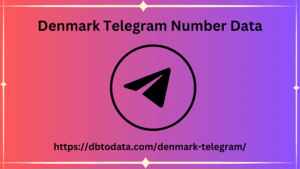Post by amirmukaddas on Mar 10, 2024 23:59:54 GMT -5
In the vast universe of SEO optimization, a tool that is often overlooked is the canonical attribute of the <link> tag. This small detail in the source code can have a significant impact on the indexing and visibility of your website. In this article, we will explore what the canonical attribute is, how and when to use it effectively. What is the Canonical attribute The canonical attribute is an HTML element that allows you to indicate the preferred version of a page, especially when there are several with similar or duplicate content . This helps search engines understand which page to consider as the main source and, consequently, avoid problems related to duplicate content in SERPs. When to Use the Canonical Attribute 1. Pages with Similar Content: When you have pages with similar content, such as product pages with slight variations or category pages showing the same items, the canonical attribute can be useful to indicate the preferred version.
Be careful, because in this case there is probably an underlying organizational problem. You can certainly use canonical as a “patch” to deal with a structural problem… but it's better to solve the structural problem . 2. Parameterized URLs: If you have parameterized URLs that generate different views of the same page, the canonical attribute can consolidate authority towards a specific version, avoiding duplication. This Denmark Telegram Number Data is probably the most widespread and useful use of canonical. 3. Duplicate Content: If your site contains pages with duplicate content, for example desktop and mobile versions, the canonical attribute can be a valuable ally to indicate the preferred version and improve indexing. If you have many identical pages, perhaps delete the duplicates , which is better. When to Avoid the Canonical Attribute Significantly Different Content: If pages have significantly different content, the canonical attribute may confuse search engines rather than help. So for example, if you have two different pages competing for the same keyword, maybe merge them instead of using canonical. The Importance of Serving the Canonical Attribute in Source Code An often overlooked detail is how to implement the canonical attribute.

If a path does not refer to a page that we want to rank on Google, it is advisable to use a JavaScript function in the source code, avoiding the use of the href link. This subtle detail can make the difference to search engines when they want to develop priority orders with respect to crawling. The path served via JavaScript will still have to be canonicalized to the page to be indexed, for greater security. Google can in fact see JavaScript links without any particular problems. An example of what has just been explained are the filters on the category pages of e-commerce sites . If they do not need to be indexed, they can be conveniently served via JavaScript and canonicalized to the corresponding category page.
Be careful, because in this case there is probably an underlying organizational problem. You can certainly use canonical as a “patch” to deal with a structural problem… but it's better to solve the structural problem . 2. Parameterized URLs: If you have parameterized URLs that generate different views of the same page, the canonical attribute can consolidate authority towards a specific version, avoiding duplication. This Denmark Telegram Number Data is probably the most widespread and useful use of canonical. 3. Duplicate Content: If your site contains pages with duplicate content, for example desktop and mobile versions, the canonical attribute can be a valuable ally to indicate the preferred version and improve indexing. If you have many identical pages, perhaps delete the duplicates , which is better. When to Avoid the Canonical Attribute Significantly Different Content: If pages have significantly different content, the canonical attribute may confuse search engines rather than help. So for example, if you have two different pages competing for the same keyword, maybe merge them instead of using canonical. The Importance of Serving the Canonical Attribute in Source Code An often overlooked detail is how to implement the canonical attribute.

If a path does not refer to a page that we want to rank on Google, it is advisable to use a JavaScript function in the source code, avoiding the use of the href link. This subtle detail can make the difference to search engines when they want to develop priority orders with respect to crawling. The path served via JavaScript will still have to be canonicalized to the page to be indexed, for greater security. Google can in fact see JavaScript links without any particular problems. An example of what has just been explained are the filters on the category pages of e-commerce sites . If they do not need to be indexed, they can be conveniently served via JavaScript and canonicalized to the corresponding category page.
